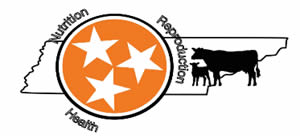

Weaning, the Foundation for Replacement Heifer Success and Reproductive Efficiency
By: C. M. Dalton and K.J. McLean

Proper management during weaning will minimize the effects of one of the most stressful events in beef cattle operations and lay the foundation for efficient development of replacement heifers. Most beef calves are weaned at 6-8 months of age but weaning can be done as early as 90 days of age with proper nutritional management (Riggs et al., 2011). There are three common weaning strategies: total separation, fence line, and two-stage or nose-ring (Riggs et al., 2011). Total separation is a very common method, and requires the least amount of labor. However, this method can increase stress due to the sudden shock of removal of calf from the cow. A good way to decrease stress levels from total separation is the implementation of the fence line method. This weaning method allows cows and calves contact through the fence without the ability to suckle. There is also evidence supporting the usage of the two-stage method to decrease the stress at weaning (Enríquez et al., 2010). Haley et al. (2005) found calves spent less time walking and vocalizing after separation following a two-stage weaning when compared to total separation. All weaning methods will induce some stress, and a stress-induced immune response. When managed correctly this immune response is mild and recovery is quick but in severe cases, this immune response and subsequent health problems may have long-term effects.
The effects of stress at weaning or any immune response during development may influence subsequent reproductive efficiency in replacement heifers. Immune responses are controlled through cytokines which regulate many aspects of well-being, metabolism, behavior, thermoregulation, and nutrient partitioning (Colditz 2002). Our lab has shown uterine cytokines vary throughout normal development (Seay et al., 2021). However, unmitigated stress may alter the cytokines levels and growth of the replacement heifer. If weight gain, following weaning, is affected by stress or illness, heifers may not reach developmental goals (Ribeiro and Carvalho 2017). Replacement heifers should weigh 50 to 65% of their mature bodyweight (BW; Patterson et al., 1992; Funston et al., 2012) to maximize the number of cyclic females entering the breeding season. Additionally, heifers with decreased weight gain after weaning may delay the onset of puberty and the first estrous cycle, which will influence pregnancy rates in the first breeding season. Heifers bred on the first estrous cycle have a 21% lower conception rate compared to heifers that have experienced multiple cycles. (Byerley et al., 1987). Decreased pregnancy rates in replacement heifers due to poor development exacerbates the monetary investment by the producer. This can also lead to increased costs via extra expenses for medications. Weaning is a pivotal moment for all cow-calf producers but those raising replacements may be laying the foundation for success from the moment females weaned.